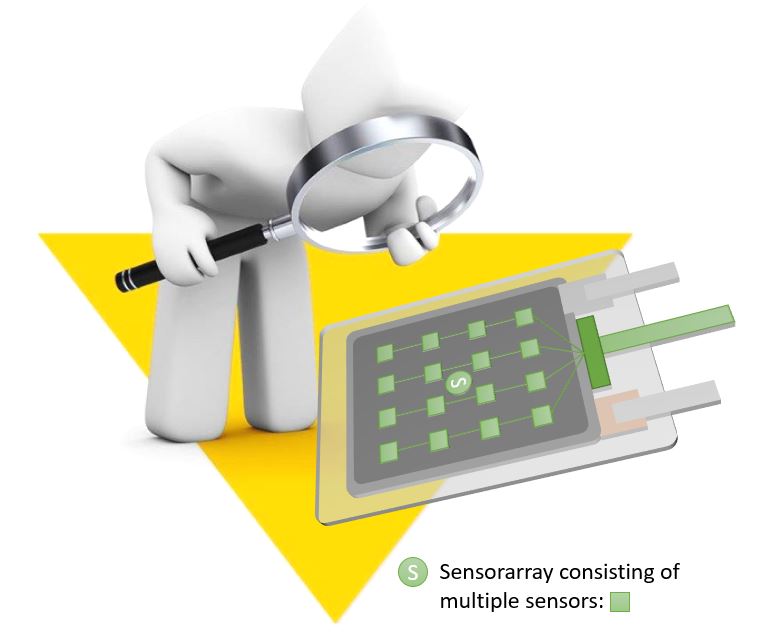
10 May 2021 – Monitoring of temperature and pressure inside lithium ion cells by the implementation of level 1 sensors will allow the estimation of the present cell condition during operation. Level 1 sensors will be attached to one side of the stacked battery electrode inside the cell and provide information on the cells temperature or pressure by a separate wiring feedthrough. To realize such sensor devices, different aspects for cell integration, like sensor wiring, feedthroughs and encapsulation for chemical resistance against electrolyte must be considered.
SENSIBAT partners identified suitable sensor materials for the adaptation of existing temperature sensors. First sensor structures were manufactured and characterized based on existing layouts to evaluate processability and sensitivity. The results of these works are currently used to design revised layout concepts. Occurring internal pressure rises will be detected with sensor concepts based on proven capacitance read-out concepts. Feed-through tests with respect to the integrity of sensor encapsulation and battery pouch will represent the working focus of the upcoming months.
Prototyping of baseline cells
The presence of integrated sensors must not influence the electrochemical performance of the cell and its safety. This will be determined by the comparison of cells without sensors (baseline cells) and cells with integrated sensors by electrochemical, safety and condition monitoring tests.The chosen cell formats are 1Ah and 5Ah pouch cells with stacked design and incorporate graphite based negative, NMC622 based positive electrode materials and standard liquid electrolyte. NMC 622 material was chosen, because it is expected to be the battery chemistry with the highest worldwide demand for the coming 5 years.
At the present state of the project, the electrodes were produced and shipped to the different partners, responsible for cell production. Currently, these materials are used to manufacture baseline cells, which will be followed by an intensive investigation according to specified characterization routines.



